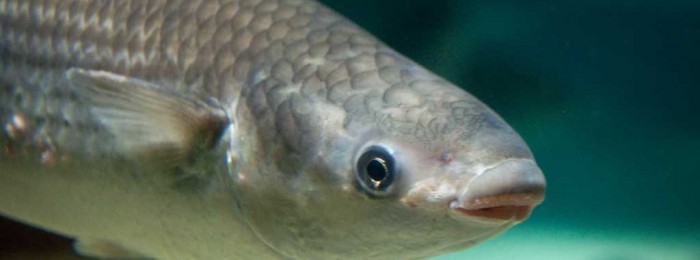01843 585310
info@kentandessex-ifca.gov.uk

01843 585310
info@kentandessex-ifca.gov.uk

Chelon labrosus Mullet have a torpedo shaped body which is cylindrical in cross-section and a broad head which is flat between the eyes. They have relatively small mouths and thick lips. The scales are large and round and are easily detached when handled.
Mullet are a slow growing, long lived species, living up to 25 years and maturing, on average, at 9 years (42cm) and 11 years (47 cm) for males and females respectively in the UK. Only a proportion on the reproductively mature stock is thought to breed each year. Spawning takes place from January-April at sea producing pelagic eggs and larvae. Mullet are usually found in schools inshore often in estuaries or in marinas and harbours feeding on algae, small invertebrates and detritus during the warmer summer months but reducing feeding effort during colder winter month.
Mullet play an important part of the ecology of inshore waters with eggs and juveniles providing an important source of prey for predatory species such as bass, herring, mackerel and flatfish species in nursery grounds.
© Kent & Essex IFCA 2025 - All Rights Reserved | Privacy Policy